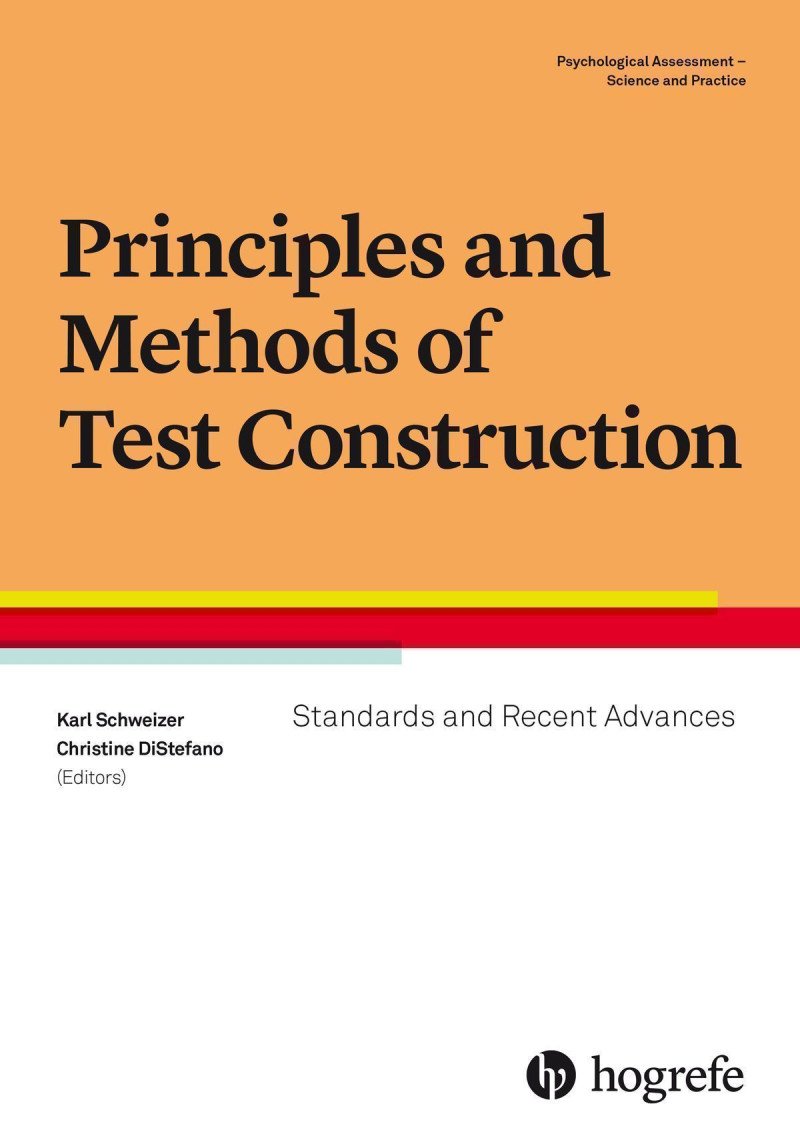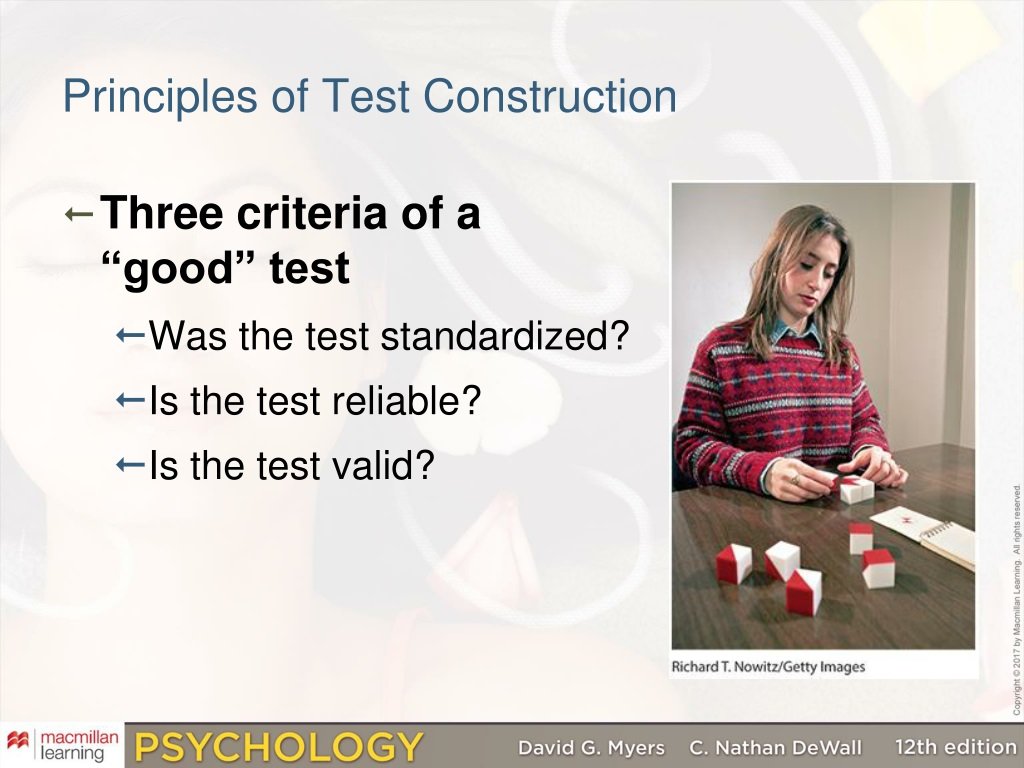There are two principal approaches or theories in relation to the construction and analysis of tests, Classical Test Theory (CTT) and Item Response Theory (IRT).
What are the 2 most important principles of test construction discuss?
1. Test-Retest Reliability: Using the same test on two occasions to measure consistency. 2. Split-half Reliability: Dividing the test into two equal halves and assessing how consistent the scores are.
What are the three criteria for test construction?
The data was analyzed by using the indices of difficulty and discrimination to assess teachers' perceived multiple-choice test construction competence. The criteria for a good test are clarity, practicality, efficiency, and fairness.
What are the criteria of a good test construction?
- Reliability – to be reliable, the test needs to be consistent and free from errors.
- Validity – to be valid, the test needs to measure what it is supposed to measure.
What is the concept of test theory?
What is the importance of test and measurement in psychology?





What is the purpose of measurement in psychology?
Measurement is the assignment of scores to individuals so that the scores represent some characteristic of the individuals. Psychological measurement can be achieved in a wide variety of ways, including self-report, behavioural, and physiological measures.
Frequently Asked Questions
Why is item discrimination important?
So item difficulty helps us to know the degree to which students get answers correct, whereas item discrimination examines how the top-scoring group of test takers compares to the lowest-scoring group of test takers, another important piece of information to help us know how well our items are working.
What is the discrimination value of test items?
How Effective Is That Test Item? Item Discrimination Made Simple
| Table 1 | |
|---|---|
| 0.10 – 0.14 | Low discrimination |
| 0.15 – 0.19 | OK discrimination |
| 0.20 – 0.34 | Moderate discrimination |
| 0.35 and above | High discrimination |
How can you improve the reliability of a test?
Measurement error is reduced by writing items clearly, making the instructions easily understood, adhering to proper test administration, and consistent scoring. Because a test is a sample of the desired skills and behaviors, longer tests, which are larger samples, will be more reliable.
What is convergence requirements in FEM?
What does convergence mean in simulation?
When a simulation has generated enough statistics such as that the error estimate on the quantity you want to calculate is lower than the precision that is necessary for addressing your specific scientific question, then the simulation has converged.
FAQ
- What is convergence error?
Iteration or convergence errors occur due to the difference between a fully converged solution of a finite number of grid points and a solution that has not fully achieved convergence.
- What is test item writing?
As a test item writer, you write questions and answers for use in various types of exams. This may involve creating multiple-choice questions, selecting content based on the expected educational attainment of test takers, or conforming to standardized test requirements for any given subject.
- What is an example of item writing?
Common examples include: multiple-choice questions, true/false questions, short-answer questions and open-ended essay prompts. Yet, whatever form an item may take, it has a single purpose: to help measure test takers' knowledge, skills and/or abilities as accurately as possible.
- What is the principle of item writing?
- Write items as briefly as possible without compromising the construct and cognitive demand required. Get to the point in the stem and present clean, clear options for the examinee to choose. Avoid unnecessary background information. Over-specific content tends to be trivial.
- How do you write an assessment item?
- Guidelines for Writing Items
- Focus on a single problem when writing an item.
- Use new situations to assess application.
- Keep content of items independent.
- Avoid opinion-based items.
- Address a mix of higher-order and lower-order thinking skills.
What information is there about evaluating test construction theories
| What are the two types of written test items? | There are two general categories of test items: (1) objective items which require students to select the correct response from several alternatives or to supply a word or short phrase to answer a question or complete a statement; and (2) subjective or essay items which permit the student to organize and present an |
| What is the primary purpose of the cavity or air space between the thermal insulation and the exterior cladding of a cold facade? | This element provides the building with a gap between its perimeter wall and the exterior cladding. Its primary purpose is to moderate the exchange of heat, air, and light that circulates between the interior and exterior of the building. |
| Which is a distinguishing characteristic of a functional layer versus a material layer? | Which is a distinguishing characteristic of a functional layer versus a material layer? A functional layer should be continuous, while a material layer may be limited in extent. |
| What is the main advantage of an insulated cavity wall? | Cavity wall insulation is used to reduce heat loss through a cavity wall by filling the air space with material that stops heat transfer. This captures the air within the cavity, preventing heating loss and resulting in reduced heating costs. |
| What are the advantages of a ventilated facade? | A ventilated facade reduces the direct solar impact on the building and the walls do not heat up as much as other constructions during Summer, thanks to the constant air flow in the cavity which is constantly cooling the construction. |
- What are the properties of layered materials?
Depending on the chemical composition, the layered material possesses functionalities such as conductivity, semiconductivity, magnetic property, luminescence property, and photocatalytic activity.
- Why is test measurement and evaluation important in education?
Assessment of knowledge and skills: Tests, measurements, and evaluations allow educators to assess the knowledge and skills of students. They help in identifying what students have learned, their strengths, and areas that need improvement.
- Why is test construction important?
Designing tests is an important part of assessing students understanding of course content and their level of competency in applying what they are learning.
- What is the purpose of test and measurement?
Tests and measurements are standardized instruments, such as questionnaires, inventories, and scales, which are used to measure constructs in various social science disciplines. They are used for diagnosis, research, or assessment. It is difficult to accommodate the access restrictions imposed by most test publishers.
- What is the most significant purpose of measurement in assessment?
It's detecting, analysis, and interpreting student's learning and progress. Assessment is a process by which information is obtained relative to some known objective or goal. It is “the various methods used by educators to measure and document the academic achievement and skills of students during preschool adulthood.
